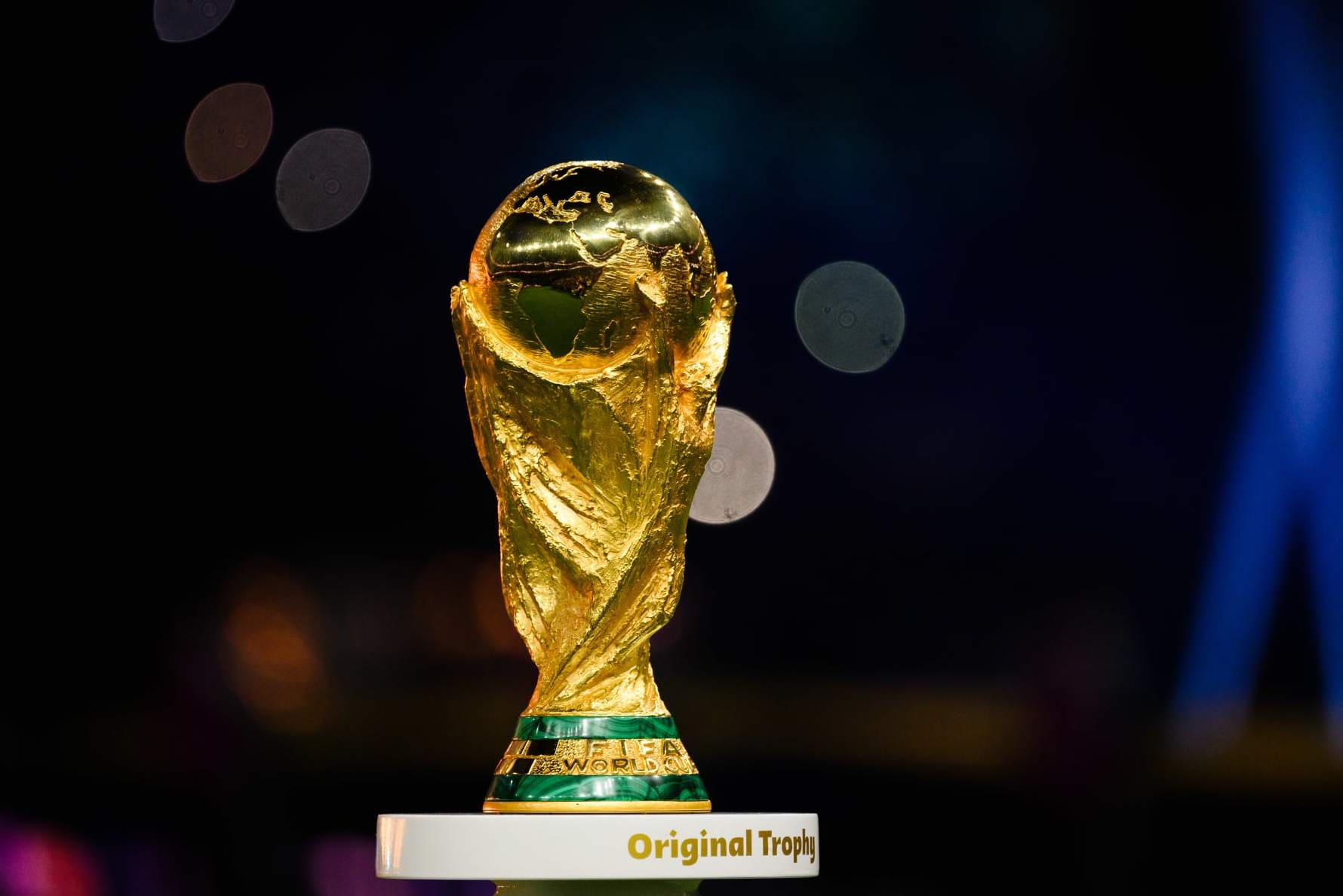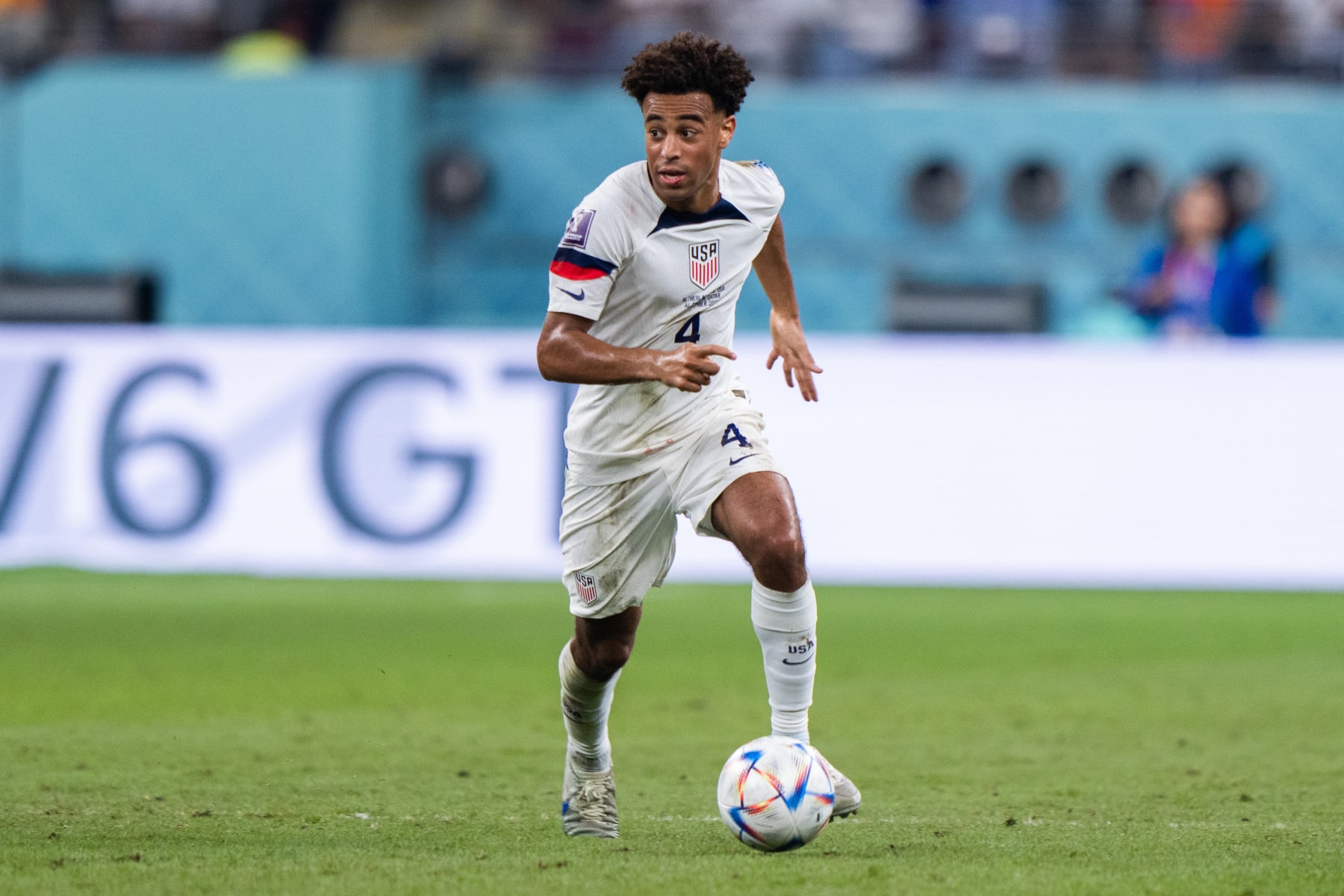Way-Too-Early Preview of World Cup 2026
Way-Too-Early Preview of World Cup 2026

There is only one thing to do now the 2022 World Cup is finished: Start thinking about the next one.
The 2026 men's tournament is set to bring about sweeping changes and the opportunity for even more storylines that are worth tuning in for. It's what FIFA wants, you know.
Read on for a preview that is so early it's almost ridiculous.
When, Where and What Else You Need to Know

Let's start with the basics. The 2026 Men's World Cup will take place across three countries: Canada, Mexico and the United States.
Despite the decision to hold Qatar 2022 midway through the club season—making it a winter tournament for European teams—the next iteration will revert back to the June-July schedule we're used to. No opening date has been confirmed just yet.
Undoubtedly the headline alteration for 2026 is the addition of 16 extra teams, expanding the field by 50 percent to 48 in total. FIFA initially indicated this would break down into 16 groups of three, a format that was put forward to ensure every country goes for the win in their two confirmed games.
However, FIFA President Gianni Infantino recently indicated the success of the traditional groups of four in Qatar is likely to cause a rethink. Twelve groups of four seem more palatable, but there is likely to be a fair bit of toing and froing as the governing body does what it can to maximise profits from television rights for the competition.
A greater number of teams, of course, means more opportunity for nations to qualify who otherwise wouldn't make it. The initial reform outlined 16 spots for Europe, nine for Africa, eight for Asia, six each for South America and North America plus one guaranteed spot for Oceania for the first time ever.
When you add in the host nations, whose participation is deducted from the relevant confederation's allocation, that still only makes up 46 teams. FIFA's opening plan involves a six-team play-off for the final two spots.
The United States will be the main hub for those looking to grab tickets, especially from the quarter-finals onward. USA will host 60 matches, while Canada and Mexico are booked to put on 10 each.
All knockout games from the quarter-finals on will take place in the U.S., with MetLife Stadium (East Rutherford, New Jersey), SoFi Stadium (Inglewood, California) and AT&T Stadium (Dallas) among the favourites to host the final. Mexico City's Estadio Azteca is the most famous footballing arena in the competition—a stadium in which both Pelé and Diego Maradona have lifted the trophy—and will become the first to host matches at three World Cups. A nice bit of history, even if the classic location is being overlooked for the bigger matches.
It's worth noting that, with FIFA yet to confirm the format, it's hard to dissect exactly how the knockout stages will play out in terms of numbers and if there will be more than one bracket.
The Likely Favourites

With or without Lionel Messi, Argentina is more than likely to enter the 2026 tournament among the favourites.
Much of their combativeness en route to winning this year's competition was driven by youngsters such as Julián Álvarez and Enzo Fernández, two players who made their mark as substitutes and then became undroppable. Alexis Mac Allister is just 23 and it's easy to forget Cristian Romero is only 24. Coach Lionel Scaloni's managerial career is really just beginning at 44.
France's squad in Qatar ranked among the youngest with an average age of 26.6 years old. Starman Kylian Mbappé will be only 27 when kick-off arrives in 2026, with youngsters such as Aurélien Tchouaméni, Eduardo Camavinga, Dayot Upamecano and Ibrahima Konaté also entering their prime years around this time.
It's remarkable to think how close they were to defending their crown after losing key stars Karim Benzema, Paul Pogba, N'Golo Kante, Christopher Nkunku and Lucas Hernandez.
While Brazil is always expected to perform, there will certainly need to be an uptick in key areas ahead of 2026. Neymar, Casemiro and Danilo will be mid-30s, while Marquinhos, Fred and others are right behind them.
The dressing room influence of Thiago Silva and Dani Alves will be long gone. Is Richarlison really good enough to lead that front line to trophies? There will be strong opinions on both sides.
It's likely both Spain and England will be looking to 2026 as their opportunity to strike. Only the United States and Ghana had a lower average age in Qatar than the Spanish, a side that included footballing babies such as Gavi (18), Alejandro Balde (19), Pedri (20), Nico Williams (20) and Ansu Fati (20). It's also easy to forget Ferrán Torres is only 22 years old and still has many years of improvement ahead of him.
Spain are certainly in a transitional moment, with the final remnants of the 2010 World Cup- and Euro 2012-winning sides drifting away in Sergio Busquets and Jordi Alba. Busquets announced his international retirement days after Spain were knocked out by Morocco in Qatar. But as noted above, there are readymade replacements already involved, a factor that will stand them in great stead for the future.
The England crop is further along their development line, with Jude Bellingham (19), Bukayo Saka (21), Phil Foden (22) and Declan Rice (23) all showing they could be major players on the 2026 stage. One has to wonder if Harry Kane, who will be 33 by the end of the next tournament, will need some stiffer competition in North America.
Right now there's no obvious candidate to fill that void, though an in-form Marcus Rashford showed in Qatar he might be capable.
USMNT'S Prospects

Discussing teams that need to find a striker segues into the USMNT perfectly. Home advantage is certainly a thing in the World Cup (forgetting how awful Qatar's results were), and the USA showed they have the quality to compete despite obvious flaws with Gregg Berhalter's decision-making at this year's showpiece.
Draws with Wales and England, plus a win over Iran in a high-pressure match, should be seen as a good return.
However, Berhalter's tactics played into Netherlands' hands during the round of 16 defeat, opening up space for key players such as Denzel Dumfries to exploit gaping holes out wide. The coach underused Gio Reyna across all games and held back a side that showed it can control games while offering a threat if they are allowed to express themselves.
Berhalter never really recovered from his call to leave Ricardo Pepi at home; he's a striker who would have offered more than Jesus Ferreira in USMNT's biggest game for years against the Dutch. It's unlikely Berhalter will still be in charge when the country picks up hosting duties, but either way, whoever is in the dugout must build their team around the excellent midfield trio of Tyler Adams, Weston McKennie and Yunus Musah.
In 1994, when the USA last hosted the World Cup, they were knocked out in the round of 16 with a 1-0 loss to Brazil. The goal for 2026 has to be to go further at the very least. With some smart coaching, they can 100 per cent achieve that.
2022 Stars We Expect to See Again

Wipe away those tears, friend. Just because we are unlikely to see two of the greatest players of all time in Lionel Messi and Cristiano Ronaldo and generational talents such as Luka Modrić at another World Cup, doesn't mean it's time for sadness. A great deal of major talent shone in Qatar and is set to play even bigger roles four years from now.
There's probably no need to mention Mbappé again. Nor the aforementioned French, Spanish and English stars explored just two slides ago. Let's take a moment to think about what level Cody Gakpo (23), Joško Gvardiol (20) and Azzedine Ounahi (22) could reach after another period of development.
These three are likely to land major transfers in January or the summer from their clubs: PSV, RB Leipzig and Angers. They all played excellently in Qatar, defining their nations' progress with match-winning performances in front of millions. The World Cup's casual audience will remember this, in the same manner people recognise Xherdan Shaqiri or Enner Valencia as "tournament players."
Gakpo, Gvardiol and Ounahi can go on to achieve more than that, of course.
It feels only right to end with mentions of Julián Álvarez and Enzo Fernández. The former changed Argentina's style of play completely, giving them a difficult press to deal with and freeing up Messi to do his thing. He scored excellent goals that Lautaro Martinez just wouldn't have created. Fernández, named young player of the tournament, had barely ever featured for his country before scoring a brilliant goal off the bench against Mexico and then becoming instrumental for Lionel Scaloni's quickly evolving midfield. You can bet, with some certainty, they will be vital assets when 2026 arrives.
